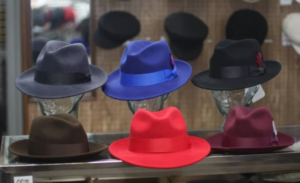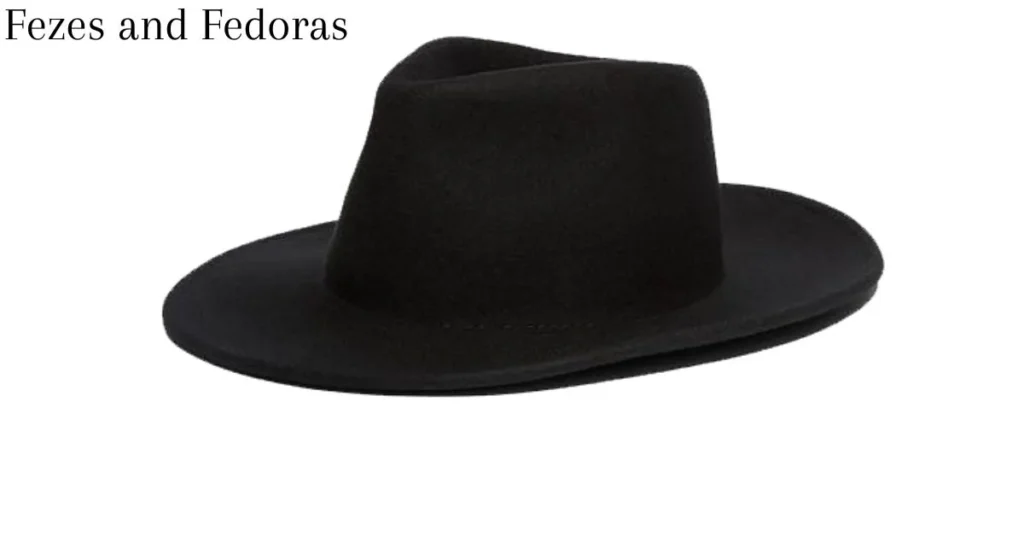Hats have always been more than just accessories; they can tell a story about the wearer, their culture, and their time. Among the many types of headwear, fezes and fedoras stand out for their unique shapes and rich histories. Each hat has travelled through time and across cultures, symbolizing various social and political movements. This article explores the fascinating origins, cultural significance, and modern relevance of fezes and fedoras, offering a detailed look at how these iconic hats have evolved and endured.
From the ornate fezes of the Ottoman Empire to the stylish fedoras of Hollywood’s golden age, these hats represent more than just fashion. They are woven into the fabric of history, reflecting societal, cultural, and political changes. Let’s delve into the stories behind these timeless pieces of headwear and see how they continue to capture our imagination.
The Origins of the Fez: A Symbol of the Ottoman Empire
The fez, a flat-topped hat with a cylindrical shape, is deeply rooted in the history of the Ottoman Empire. This distinctive hat, often red and made of felt, is believed to have taken its name from the Moroccan city of Fez, where the dye used for the hat was originally sourced. The fez became popular in the 19th century, particularly after Sultan Mahmud II introduced it as part of his modernization efforts in the 1820s.
Sultan Mahmud II aimed to replace the traditional turban with the fez as part of his broader vision to modernize the Ottoman military and bureaucracy. The fez was intended to symbolize a new, Western-oriented identity for the Ottoman state, moving away from old traditions. By adopting the fez, the Ottoman Empire sought to align itself more closely with European norms and modernize its appearance and administration.
The Cultural Significance of the Fez
The fez’s influence extended far beyond the Ottoman Empire. As the empire’s reach spread across the Middle East, North Africa, and parts of Eastern Europe, the fez became a prominent symbol in these regions. It evolved into a mark of Islamic identity and respectability, worn by many men in the Muslim world. The fez was not just a piece of headwear; it symbolized a connection to cultural and religious values.
In the early 20th century, the fez also became a political symbol. As nationalist movements emerged in Ottoman territories, various groups embraced the fez as a symbol of resistance against Western imperialism. It represented a connection to traditional Islamic culture in the face of foreign domination. The fez’s role as a political and cultural symbol highlights its significance beyond just fashion.
The Fedora: A Hat of Elegance and Mystery
Unlike the fez, the fedora has its roots in the Western world. This soft-brimmed hat with an indented crown gained popularity in the early 20th century, particularly in the United States and Europe. The fedora was initially associated with women’s fashion, thanks to its popularity in Victorien Sardou’s 1882 play Fédora. The play’s main character, Princess Fédora, wore a soft-felt hat that inspired the hat’s name.
By the 1920s, the fedora had firmly established itself as a men’s fashion staple. It became trendy during the Prohibition era in the United States, favoured by gangsters, detectives, and stylish individuals. The fedora’s broad brim and sleek design gave it an air of sophistication. At the same time, its association with film noir and Hollywood further solidified its status as a symbol of relaxed, effortless style.
The Fedora’s Cultural Impact
The fedora’s rise in popularity was closely tied to the cultural changes of the early 20th century. As society moved away from the rigid formalities of the Victorian era, the fedora emerged as a symbol of modernity and independence. It became the hat of choice for the new urban man—confident, stylish, and unafraid to break with tradition.
In the United States, the fedora symbolized the American Dream. It was worn by men from all walks of life, from business people to factory workers, and became a universal symbol of success and respectability. The fedora’s popularity transcended class boundaries, making it a true icon of egalitarian fashion. Hollywood played a crucial role in cementing the fedora’s status as a cultural icon. Actors like Humphrey Bogart and Cary Grant made the fedora essential to their on-screen personas. Whether it was Bogart’s hard-boiled detective in The Maltese Falcon or Grant’s suave leading man in various films, the fedora became synonymous with classic American heroism.
Fezes and Fedoras: A Study in Contrasts
Fezes and fedoras may seem worlds apart, but they share intriguing similarities. Both hats have become symbols of their respective cultures and times, representing different aspects of identity, tradition, and style. With its origins in the Ottoman Empire, the fez represents a connection to the past and Islamic identity. In contrast, the fedora, emerging from Western fashion, symbolizes modernity, sophistication, and independence.
Both hats have also been politicized throughout history. The fez became a symbol of resistance against Western imperialism, while the fedora, particularly in the United States, was associated with the rebellious spirit of the Prohibition era. These hats have been used to make statements about identity and culture, illustrating the significant role that fashion can play in shaping social and political narratives.
Modern Relevance: The Revival of Classic Hats
In recent years, the fezes and fedoras have experienced a resurgence in popularity. Vintage fashion has become trendy, and these classic hats have found new audiences among younger generations. Once banned in Turkey, the fez is now worn with pride by those wishing to reconnect with their cultural heritage. Similarly, the fedora has returned to men’s fashion, often paired with suits or casual outfits to add a touch of retro flair.
The revival of these classic hats reflects a broader trend toward nostalgia and the reappropriation of historical styles. In our fast-paced, digital world, there is a growing desire to reconnect with the past and find meaning in the symbols and traditions of earlier times. The fez and the fedora, with their rich histories and distinctive styles, offer a way for people to express their individuality while honouring cultural legacies.
The Cultural Crossroads: Fezes and Fedoras in Pop Culture
The influence of fezes and fedoras extends beyond fashion into the broader landscape of pop culture. The fez has become an iconic symbol in television, most notably associated with the Eleventh Doctor in the British series Doctor Who. The Doctor’s fez, worn in several episodes, became a quirky and beloved part of the character’s identity, leading to the famous line, “I wear a fez now. Fezes are cool.”
On the other hand, the fedora has maintained its association with film noir and classic cinema. The image of a trenchcoat-wearing detective with a fedora pulled low over his eyes is a genre staple, evoking mystery and danger. This imagery persists in modern media, with fedoras appearing in comic books and video games, symbolizing rugged individualism and timeless style.
The Future of Fezes and Fedoras
As fashion continues to evolve, it is clear that the fezes and fedoras are more than just relics of the past. They are enduring symbols that have been reinterpreted and reimagined across different cultures and eras. Whether as a nod to tradition, a statement of personal style, or a piece of pop culture iconography, these hats continue to captivate people worldwide.
In an increasingly globalized fashion world, the fezes and fedoras remind us of the power of cultural symbols. They show how fashion can transcend its original context and find new meanings in different settings. As long as people appreciate these hats’ history, artistry, and cultural significance, fezes and fedoras will remain an integral part of our sartorial consciousness.

Conclusion
Though originating from vastly different cultural contexts, fezes and fedoras share a common thread in their ability to transcend time and geography. These hats are more than just accessories; they symbolize identity, tradition, and style, resonating with people across generations. Whether worn as a statement of cultural pride, a fashion accessory, or a piece of pop culture history, fezes and fedoras continue to inspire and captivate.
Looking to the future, fezes and fedoras are likely to continue evolving, taking on new meanings and associations as they are embraced by new generations. In a constantly changing world, these classic hats remind us of the enduring power of fashion to connect us with our past and express our individuality in a way that is both timeless and unique.
FAQs
Q: What is the origin of the fez?
A: The Fez originated in the Ottoman Empire and is named after the Moroccan city of Fez, known for its red dye. It became popular in the 19th century as part of modernization reforms.
Q: What is the cultural significance of the fez?
A: The fez symbolizes Islamic identity and respectability. In the early 20th century, it was also used as a political symbol of resistance against Western imperialism.
Q: When did the fedora become popular?
A: The fedora gained popularity in the early 20th century, particularly during the Prohibition era in the United States, and became a staple of men’s fashion.
Q: Why was the fedora associated with film noir?
A: The fedora became associated with film noir due to its stylish and mysterious look, which was favored by detectives and gangsters in the genre’s movies.
Q: Are fezes and fedoras still popular today?
A: Yes, fezes and fedoras have experienced a resurgence in popularity. Fezes are worn for cultural and historical reasons, while fedoras are a trendy accessory in modern fashion.

